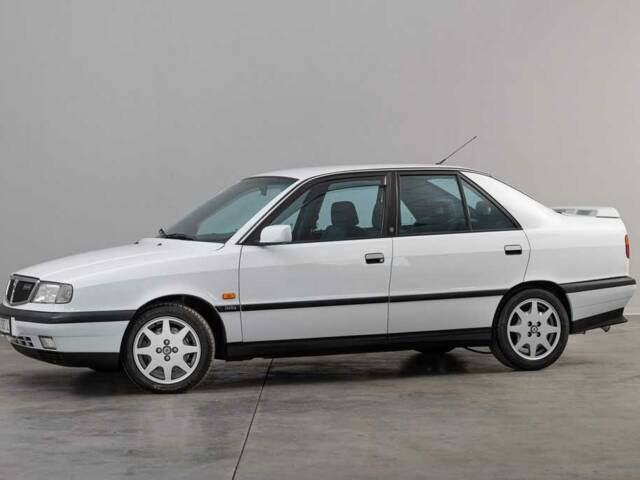Lancia Dedra Classic Cars for Sale
The Lancia Dedra, produced from 1989 to 2000 as a successor to the Lancia Prisma, is a mid-size car available in both sedan and station wagon forms. Aimed at competing with models like the Mercedes-Benz 190 W 201 and BMW 3 Series E30 and E36, it offered a more competitive price tag. Based on the FIAT Group platform shared with the FIAT Tipo and Alfa Romeo 155, it featured a design by Ercole Spada of the I.DE.A Institute, achieving an impressive aerodynamic coefficient of 0.29. A total of 418,084 units were produced during its production span.
Search results

Unique Features of the Lancia Dedra
The Dedra’s engine variety is noteworthy, including turbo versions and the dedicated Sport Integrale model. Standard features included electronic suspension, ABS, and airbags in later models. The 1994 facelift introduced the “Station Wagon” variant. The Lancia Dedra with the internal designation 835 has a listing rate of 1.8% on Classic Trader, with a comparatively lower demand compared to other Lancia models.
Technical Data
| Models | Production Years | Body Types | Drive Type | Power (HP) | Displacement (cc) | Cylinders | Fuel Type |
|---|---|---|---|---|---|---|---|
| Dedra 1.8 i.e. | 1989-1994 | Sedan (4-Door) | Front | 90-105 | 1756 | 4 | Petrol |
| Dedra 1.6 i.e. | 1989-1993 | Sedan (4-Door) | Front | 78 | 1581 | 4 | Petrol |
| Dedra 2.0 HF Turbo | 1991-1996 | Sedan (4-Door) | Front | 162 | 1995 | 4 | Petrol |
| Dedra Turbo DS | 1992-1994 | Sedan (4-Door) | Front | 90 | 1929 | 4 | Diesel |
| Dedra 2.0 i.e. 16V SW | 1994-1996 | Wagon | Front | 139 | 1995 | 4 | Petrol |
| Dedra 1.8 i.e. 16V SW | 1996-1997 | Wagon | Front | 113 | 1747 | 4 | Petrol |
| Dedra 1.8 i.e. 16V | 1996-1997 | Sedan (4-Door) | Front | 113 | 1747 | 4 | Petrol |
| Dedra 1.6 16V | 1998-2000 | Sedan (4-Door) | Front | 103 | 1581 | 4 | Petrol |
Buying Advice / Weaknesses, Maintenance, and Reliability
When purchasing a used Dedra, it’s crucial to be aware of known issues, such as mechanical problems with engine and gearbox performance, often accompanied by unusual noises or vibrations. The electrical system, including the battery and electronics, should also be checked, along with its susceptibility to rust and corrosion. A thorough review of the maintenance history is highly recommended.
Engine and Performance, Transmission, and Handling
The Dedra models offered a wide range of engine choices, balancing performance with efficiency. Special models, like the Dedra Integrale, brought all-wheel-drive excitement, drawing inspiration from rally technology. Enhanced driving dynamics were achieved through optional all-wheel drive and electronically controlled suspension.
Interior, Comfort, Exterior, and Design
Known for its high-quality materials such as Alcantara, the Dedra’s interior included features like power-adjustable mirrors, optional air conditioning, and comfortable upholstery. The design blended technology and elegance with highlighted wood inserts and stylish lighting.
Summary
The Lancia Dedra stands as a classic mid-size representative with a flair for luxury and equipment. Its diverse technical options, both in engines and body styles, make it an attractive choice for enthusiasts of traditional Italian automotive craftsmanship.